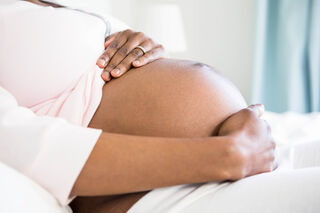Health
The State’s “Legitimate Interest” in Women's Health
Personal Perspective: Dobbs will lead to more “potential” regulations.
Posted August 24, 2022 Reviewed by Vanessa Lancaster
Key points
- In the recent Dobbs case, the Court’s majority argued abortion poses a unique threat to the State's legitimate interest in "potential life."
- While emphasizing the State’s interest in “potential life,” the Court paid little attention to women’s interest in their actual lives.
- Legislation should limit its focus to regulating the process pre- versus post-viability.

Two months have passed since the Supreme Court restricted the rights of half the country. Yet, Dobbs-related headlines have already significantly declined. Meanwhile, in another three-month-old case, two actors who fought over who defamed who continue to capture national attention. Regardless, while the world keeps turning, I will continue my coverage regarding how a post-Dobbs world affects us all.
A ”Legitimate” Interest
In Dobbs v. Jackson Women’s Health Organization (2022), the Court’s majority repeatedly argued that abortion poses a unique issue due to the State’s legitimate interest in “potential life.” They argued that the State is permitted to regulate (or, in actuality, ban) abortion in any way, as long as it has a “rational basis” for doing so. Notably, a rational basis is essentially the lowest level of scrutiny to which a law can be subjected.
Because the Court has now recognized that the State has a “legitimate interest” in regulating abortion, the only other requirement is that the law is sufficiently connected to that interest. This low threshold could easily open the door to more restrictive laws allowing the State to regulate numerous facets of women’s health, as long as they can provide a rational connection from the regulation to abortion.
Unfortunately, while emphasizing the State’s interest in “potential life,” the Court paid little attention to women’s interest in their actual lives. Instead, they focused on issues concerning the “arbitrary” nature of the term “viability.” The Court asks: “Is a fetus viable with a 10 percent chance of survival? 25 percent? 50 percent? Can a State make such a judgment?”
I ask the Court today, for future women who become pregnant and suffer complications that put their health at risk—and approximately 8 percent of pregnancies involve complications: When is their health sufficiently at-risk to legally terminate the pregnancy? “…with a 10 percent chance of survival? 25 percent? 50 percent? Can a State make such a judgment?”
This question, of course, is only relevant to States that even allow exceptions to protect a woman’s health. For those that do not (or will not) even recognize exceptions to abortion bans, the Court has decided that the State’s interest in protecting “potential” life outweighs women's actual lives. Further, maternal mortality rates in the U.S. have increased significantly from 2018 to 2020, and women are much more likely to die from childbirth than from abortions—not to mention the increased likelihood of dying during childbirth for Black versus white women.

Defining Viability
The Court quoted the Mississippi legislature in claiming that performing abortions after 15 weeks is “demeaning to the medical profession.” But, what actually seems “demeaning to the medical profession” is a paternal State that believes it knows better than doctors how best to protect human life—a State that will force doctors to choose potential (but not yet viable) lives (sometimes in all cases) over actual lives.
The Court was right about one thing. State lawmakers should never have been permitted to create their own estimates of viability, regularly pushing that line earlier and earlier. Rather, doctors should be permitted to make those judgments. Legislation should simply focus on regulating the process pre- versus post-viability. The rest should be left to the judgment of medical professionals. While these are “difficult questions,” they are difficult questions left to the purview of medical professionals every day.
And, given the number of medical professionals who joined the amicus brief supporting Jackson Women’s Health Organization, I imagine it would be a difficult question the majority of medical professionals would be more inclined to face.
I conclude this post by re-citing issues with the Court’s selected thresholds. The Court that deemed "viability" too slippery of a term on which to hang judicial precedent hung theirs on the term "potential."
We must all be aware of the potential that term has to reach us all.




